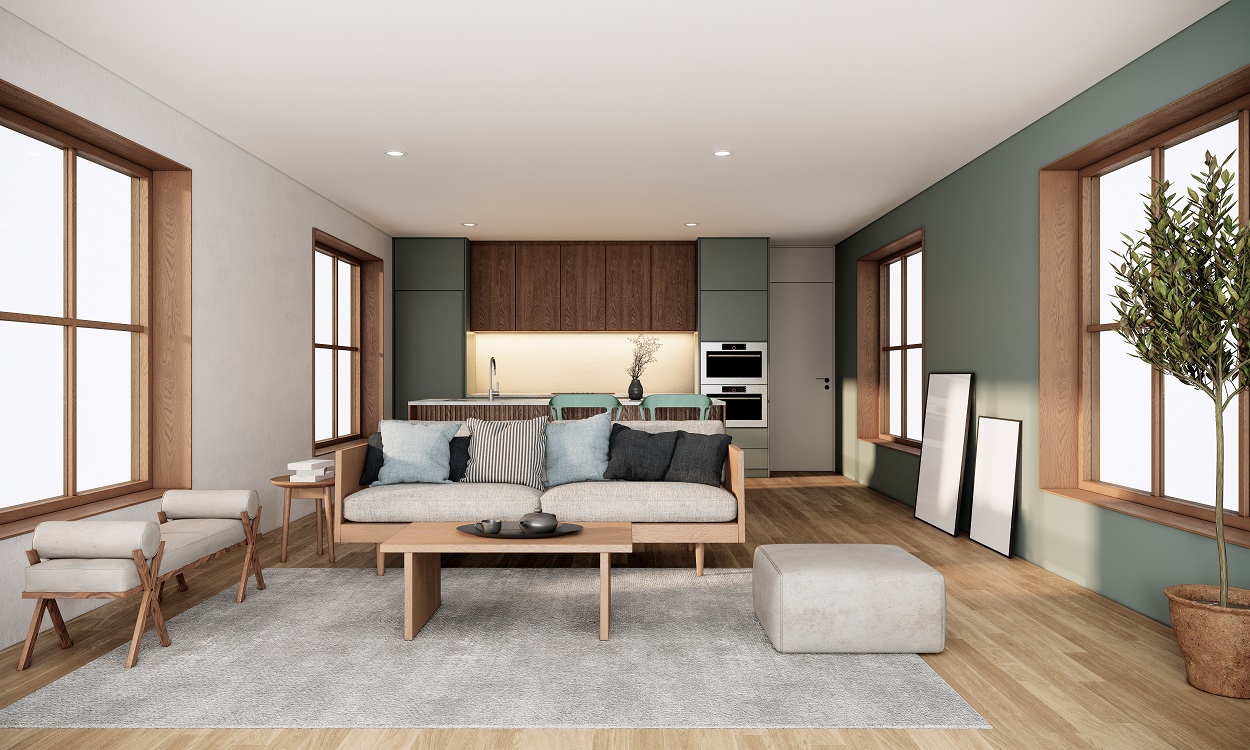
Japandi style is a combination of Japanese and Scandinavian interior styles. Both Japan and Scandinavia are known for their adoration for utilitarian yet rich moderation. The two societies likewise share comparative thoughts around tracking down happiness in basic things – analyze the Scandi idea of hygge, a plain sensation of comfort, and the Japanese expression wabi-sabi, which alludes to seeing magnificence in imperfection.
Cozy and simplest, Japandi style remains as a conspicuous difference to the bright, designed, maximalist insides we have been seeing as of late. All things being equal, Japandi favors the 'toning it down would be the best methodology, with a dismissal of particular prints and adornments and an accentuation on clean lines, hearty tones, craftsman craftsmanship, manageable materials, and staying in contact with nature.
The Japandi style began creating back in 2018 yet has as of late been taking off in prominence, turning into a go-to style decision for some homeware brands and property holders. Like the ethos of cottage core, one more immense inside pattern for 2021, the Japandi tasteful stems from a craving to get back to easier occasions and embrace the magnificence of nature.
In case you want to create a home on the Japandi Style, we have gathered the points which you need to follow to utilize the Japandi style in your home.
Bring In Simplicity by Decluttering Your Space
Japandi and minimalism are not very much the same, but rather these two plan styles truly do share various qualities. Like minimalism, which is well known in Scandinavian nations and Japan the same, Japandi centers around clean lines, straightforward shading ranges, and supportability.There are a couple of simple methods for accomplishing the Japandi Look with any space, beginning with a decent fresh start. The most ideal way to begin is to clean up and just save the things that fill a need for the space. Minimalism is critical, with a pleasant free stream to the room, with regards to Japandi.
Japandi style homes ought to be cleaned up, use eco-accommodating materials, stress common sense, and have a (generally) impartial shading range. While finishing a Japandi home, focus on wistful quality over amount.
-
Create Open Spaces with Natural Lighting
Try Using low seats, easy chairs, beds, and footstools, and go ahead and blend and match diverse furniture for added surface and differentiation. Low furniture helps make the space outwardly open, fascinating, and legitimate. Yet don't get carried away. You need your space to be without obstruction for a moderate look and have the option to openly stream all through your space.
Don’t Compromise on Quality Over Quantity
Japandi Style is all about minimalism and functionality. Toning things down is the best thing to do in a Japandi home. While picking frill and furniture, restrict your choice to smart and useful furniture pieces only. This style utilizes multi-useful household items in the home, Furniture should be functional and simple.Buy Furniture that can be used for a long-time period, Try not to be hesitant to take as much time as is needed. Rundown out the essential pieces and chase down the ones that make your heart sing. While choosing furniture and accessories, stay with clean lines. From curvilinear, rectilinear, or emotional lines, the states of explicit furniture pieces and works of art are picked with extraordinary reason to be valued and seen.
Go With A Neutral Color Palette
It is best to use warm and neutral color palette when going with a Japandi style interior. Go with beiges, creams, cereals, tans, and stone tones. Getting some customarily Scandinavian neutrals and intertwining them with more obscure Japanese-style woods and unrefined substances is a characteristic organization that advances sensations of quietness and attachment.A neutral color scheme doesn't necessarily have to be dull. The way to make a neutral color scheme truly stand apart is with balance and is accomplished with the profundity of shading that mirrors the Japanese customary style.
Figure indigo blues, dull grays, profound gritty tones to challenge your Scandinavian neutrals. Be that as it may, don't get carried away with it utilizing more obscure tones sparingly and purposefully all through the home.
Use Natural Materials
Using natural materials is one more component in the Japandi style, particularly manageable materials. Iron, marble, cowhide, wood, bamboo, rattan, shells, feathers, lumber stools, sisal floor coverings, paper, earthenware pots, fleece, crude wood, material, and hemp are on the whole components that will incorporate the half breed stylishly.Attempt to combine the lines among indoor and open-air where the potential is available. The Japandi and Scandinavian societies have a profound regard for their scene and its tasteful characteristics.


.jpg&h=360&zc=1)
.jpg&h=360&zc=1)
.jpg&h=360&zc=1)

Comments (0)
Leave a comment